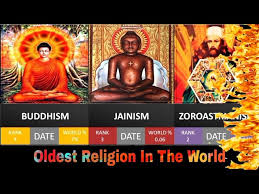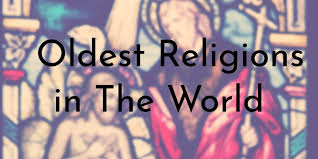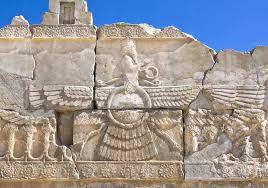What is the Oldest Religion in the World? Tracing Humanity's Ancient Spiritual Roots



Chính Sách Vận Chuyển Và Đổi Trả Hàng
Miễn phí vận chuyển mọi đơn hàng từ 500K
- Phí ship mặc trong nước 50K
- Thời gian nhận hàng 2-3 ngày trong tuần
- Giao hàng hỏa tốc trong 24h
- Hoàn trả hàng trong 30 ngày nếu không hài lòng
Mô tả sản phẩm
The question, "what is the oldest religion in the world?" is far more complex than it first appears, lacking a simple, definitive answer. This is primarily because the very definition of "religion" evolves as we delve into humanity's past, and early spiritual practices often intertwine inextricably with culture, daily life, and the nascent stirrings of human consciousness. Rather than identifying a single founder or a specific holy book from millennia ago, our exploration must venture into the shadowy realms of prehistory, examining archaeological evidence and anthropological insights to understand the earliest expressions of human spirituality and belief systems. It’s not about finding a winner, but about understanding the profound and enduring human quest for meaning, connection, and understanding of the universe.
Defining "Religion" in Ancient Contexts
Before attempting to pinpoint the oldest religion, it’s crucial to grapple with what we mean by "religion" itself. Modern definitions often imply organized institutions, codified doctrines, established clergy, and sacred texts. However, applying such definitions to the distant past would severely limit our understanding and likely exclude the vast majority of early spiritual expressions. For our purposes, we must consider "religion" in a broader sense, encompassing:
- Spiritual Impulse: The inherent human desire to connect with something beyond the mundane, to explain the inexplicable, and to find purpose.
- Ritual Practices: Repetitive, symbolic actions performed with specific intent, often involving reverence, appeasement, or transformation.
- Belief Systems: Frameworks for understanding the world, the cosmos, life, death, and humanity's place within it, including ideas about spirits, deities, or an afterlife.
- Meaning-Making: The creation of narratives and explanations that provide comfort, order, and guidance in an uncertain world.
Early forms of spirituality, often referred to as proto-religion, animism, or shamanism, were likely diffuse, localized, and deeply integrated into the fabric of hunter-gatherer societies. They didn't have temples or formalized structures in the way we understand them today, making their "discovery" reliant on interpreting often subtle archaeological clues rather than explicit historical records.
The Earliest Glimmers of Spiritual Thought: Paleolithic and Neolithic Eras
The deepest roots of human spirituality stretch back hundreds of thousands of years, long before the advent of agriculture or written language. Evidence for these ancient belief systems comes from a variety of archaeological findings, offering tantalizing glimpses into the minds of our distant ancestors.
Prehistoric Rituals and Beliefs (Paleolithic)
The Paleolithic era (Old Stone Age), spanning from roughly 2.5 million years ago to about 10,000 BCE, provides the earliest hints of spiritual thought:
- Burial Practices: The earliest and most compelling evidence of early religious or spiritual beliefs comes from deliberate human burials. Neanderthals, as early as 130,000 to 50,000 years ago, sometimes buried their dead with care, arranging bodies in specific positions, and in some controversial cases, possibly placing grave goods or flowers (e.g., the "flower burial" at Shanidar Cave). More definitively, Cro-Magnon people (early anatomically modern humans) from around 30,000 years ago, such as the "Red Lady of Paviland" or the elaborate burials at Sungir in Russia, included ochre-stained bodies, beads, tools, and mammoth ivory spears. Such practices strongly suggest a belief in an afterlife, a journey beyond death, or at least a reverence for the deceased's spirit.
- Cave Art: Magnificent cave paintings, found in sites like Lascaux and Chauvet in France, and Altamira in Spain, dating back 30,000 to 15,000 years ago, are not merely decorative. Their remote locations, often deep within caves, and recurring themes suggest ritualistic or spiritual purposes. Interpretations include sympathetic magic for successful hunting, shamanic visions, or representations of animal spirits and totems. The presence of abstract symbols alongside animal figures further hints at complex belief systems.
- Venus Figurines: Small, portable figurines depicting exaggerated female forms, like the Venus of Willendorf (c. 25,000 BCE) or the Venus of Hohle Fels (c. 35,000-40,000 BCE), are found across Eurasia. While their exact meaning is debated, they are widely interpreted as symbols of fertility, mother goddesses, or representations of the generative power of nature, suggesting early forms of goddess worship or reverence for life-giving forces.
These diverse practices indicate that long before the emergence of organized religions, early humans possessed a rich inner world, contemplating death, fertility, and the mysteries of existence, and expressing these contemplations through ritual and symbolic art.
Monumental Spirituality: Gobekli Tepe (Neolithic)
A truly revolutionary discovery, Gobekli Tepe in southeastern Turkey, dating back to approximately 9600–8200 BCE, pushes the timeline of complex religious structures back significantly. This Neolithic site consists of massive, intricately carved stone pillars arranged in circular enclosures. Crucially, it was built by hunter-gatherers, predating the widespread adoption of agriculture and settled life. This challenges the long-held assumption that organized religion arose only after agricultural surpluses allowed for social stratification and specialization. Gobekli Tepe suggests that the human impulse for monumental religious expression and collective ritual might have been a driving force for communal gathering and, potentially, even for the development of agriculture, rather than merely a consequence of it. It represents the earliest known example of a large-scale, purpose-built religious complex, a testament to the profound spiritual ambitions of our ancestors.
From Proto-Religion to Organized Faiths: The Cradle of Civilizations
As human societies transitioned from nomadic hunter-gatherer lifestyles to settled agricultural communities during the Neolithic period and into the Bronze Age, spiritual practices began to evolve into more structured and identifiable forms. The rise of cities and complex social hierarchies often coincided with the development of elaborate pantheons, priesthoods, and monumental religious architecture.
Mesopotamian Religions (Sumerian, Akkadian, Babylonian, Assyrian)
The "Cradle of Civilization" between the Tigris and Euphrates rivers saw the emergence of some of the earliest literate societies, providing us with written records of their religious beliefs. The Sumerians, dating back to at least 4000 BCE, developed a polytheistic system with a vast pantheon of gods and goddesses associated with natural forces, cities, and human endeavors (e.g., Enlil, god of wind; Nanna, moon god; Inanna/Ishtar, goddess of love and war). They built massive ziggurats – stepped pyramid-like temples – dedicated to their deities. Later empires, including the Akkadians, Babylonians, and Assyrians, adopted and adapted these earlier traditions, creating complex mythologies such as the Epic of Gilgamesh, which explores themes of mortality, heroism, and the relationship between humans and gods. While these religions flourished for millennia, they ultimately faded with the decline of their respective empires.
Ancient Egyptian Religion
Flourishing for over 3,000 years, from approximately 3100 BCE to 30 CE, Ancient Egyptian religion was a highly developed polytheistic system centered on the worship of a myriad of gods and goddesses (e.g., Ra, Osiris, Isis, Horus). Its core tenets included a profound focus on the afterlife, elaborate burial rituals (like mummification), and the belief in a divine pharaoh who acted as a mediator between humans and the gods. Temples, pyramids, and tombs served as monumental expressions of their faith, reflecting a pervasive belief in cosmic order (Ma'at) and the cyclical nature of life and death. Although immensely influential and long-lasting, Ancient Egyptian religion, like its Mesopotamian counterparts, eventually gave way to newer faiths, specifically Christianity and Islam.
Contenders for "Oldest Continuously Practiced Religion"
When the question "what is the oldest religion in the world" shifts to "what is the oldest *continuously practiced* religion in the world," the discussion narrows to a few prominent faiths that have survived the test of time, adapting and evolving over millennia.
Hinduism: The Sanātana Dharma
Hinduism is very frequently cited as the oldest living religion. Unlike most major world religions, Hinduism does not have a single founder, a specific founding date, or a single scripture. Instead, it is a complex tapestry of diverse philosophical schools, traditions, beliefs, and practices that have evolved over thousands of years. Its roots can be traced back to the ancient Vedic period in India, with the earliest Vedic texts (the Rigveda) generally dated to around 1500-1200 BCE, though elements of Hinduism may derive from even older pre-Vedic Indus Valley Civilization practices (c. 2500-1900 BCE). The term "Sanātana Dharma" itself, meaning "the eternal law" or "the eternal way of righteousness," reflects the Hindu belief in the timeless and ever-present nature of its principles. Its enduring continuity, remarkable adaptability, and vast internal diversity make a strong case for it being the oldest religion still widely practiced today.
Judaism: The Abrahamic Foundation
Judaism is considered one of the oldest monotheistic religions and serves as the foundational faith for Christianity and Islam. Its origins are traditionally traced back to Abraham, who lived around 1800-2000 BCE in Mesopotamia. The covenant between God and Abraham, the Exodus from Egypt, and the revelation of the Torah at Mount Sinai (traditionally dated to the 13th century BCE) are central to Jewish belief and history. While Judaism has a clear historical lineage and a defined set of sacred texts, its formalization and widespread practice as an organized religion with clear rituals and a distinct community likely postdate the earliest spiritual stirrings by many millennia. However, its unbroken chain of tradition, despite periods of persecution and diaspora, makes it a contender for one of the oldest *continuously practiced* monotheistic faiths.
Zoroastrianism: An Ancient Prophet's Vision
Zoroastrianism is another powerful contender for the title of one of the world's oldest religions with a known founder. It originated in ancient Persia (modern-day Iran) through the teachings of the prophet Zarathushtra (also known as Zoroaster). The exact dating of Zarathushtra is debated, with scholarly estimates ranging from 1500 BCE to 600 BCE, but commonly placing him around 1000-600 BCE. Zoroastrianism is notable for being one of the first religions to introduce concepts such as monotheism (worship of Ahura Mazda, the Wise Lord), dualism (the cosmic struggle between good and evil), heaven and hell, messianism, and individual judgment – ideas that significantly influenced later Abrahamic religions. While its number of adherents has greatly diminished, Zoroastrianism continues to be practiced by communities around the world, making it an incredibly ancient and resilient faith.
Why the Question of "Oldest" Remains Complex
The quest to identify "what is the oldest religion in the world" ultimately leads to a nuanced understanding rather than a single name. The challenges persist due to:
- Definition Fluidity: How do we weigh a formalized belief system against widespread ancestral worship or animism?
- Evidence Gaps: The further back we go, the less direct evidence we have, relying on interpretation of archaeological remains.
- Evolution vs. Origin: Many ancient traditions evolved over millennia, making it impossible to pinpoint a single "beginning" or a "founder."
- Oral vs. Written Traditions: Religions with long oral traditions predate their written codification, making precise dating difficult.
Ultimately, the "oldest religion" isn't a single entity but a spectrum of human spiritual development.
Conclusion: The Enduring Quest for Meaning
In conclusion, while there's no single, universally agreed-upon answer to "what is the oldest religion in the world," our journey through prehistory and ancient civilizations reveals a profound truth: the human spiritual impulse is as old as humanity itself. From the reverence for the dead in Paleolithic burials and the symbolic power of cave art, to the monumental structures of Gobekli Tepe, and the enduring continuity of faiths like Hinduism, Judaism, and Zoroastrianism, humans have always sought to understand their place in the cosmos, grapple with life's mysteries, and connect with forces beyond themselves.
The concept of "religion" has transformed dramatically over millennia, but the underlying human need for meaning, ritual, and community has remained a constant. The quest for the "oldest religion" is less about finding a definitive answer and more about appreciating the incredible diversity and resilience of human spirituality across the vast expanse of time.